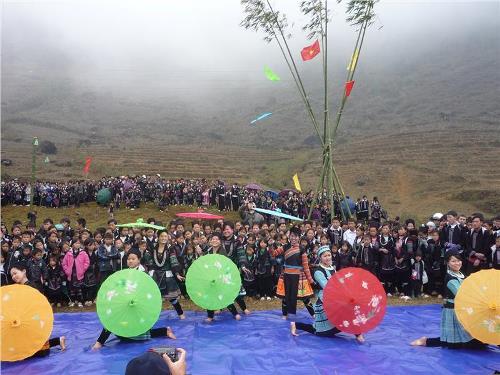breathtaking Muong Hoa Valley and towering Hoang Lien Mountains wrapped in the oceanic clouds cascading down the earth.
 |
||
Established as a hill station by the French in 1922, Sapa, located in the mountainous province of Lao Cai, is the tourism center of the northwest. As a modest land, it has many wonders of the natural scenery with topography of hills, green forests, which makes a fascinating scenic picture.
|
 |
||
Sa Pa enjoys temperate and subtropical climate with cool air throughout the year. One day, the town’s weather experiences 4 seasons: the morning is spring, the noon is likened to summer weather with mild sunshine, balmy climate; cool clouds and dew in the afternoon create a feeling of autumn weather and the night is the cold of winter.
|
 |
||
Fan Si Pan can be found in Hoang Lien National Park, which is an attraction in itself. The park covers a picturesque mountain landscape and several forests, and serves as the habitat for a diverse set of animals. Some species can only be found in northwest Viet Nam and are highly endangered.
|
 |
||
Sapa is the home to seven major ethnic groups, namely Hmong, Dao, Tay, Kinh, Day, Xa Pho (Phu La), and Hoa. Ethnic minority mostly resided in 17 communes, mainly living on agriculture, forestry and traditional crafts like brocade weaving, or bamboo and rattan weaving.
|
Thuy Dung (VGP)

Rose valley in misty Sapa
The rose valley in the Sun World Fansipan Legend tourist area in Sapa town, in the northern mountainous province of Lao Cai, has been recognised as the largest of its kind in Vietnam.

Ta Phin ancient monastery in Sapa
Located in Ta Phin village, about 12 kilometers away from Sa Pa town, Ta Phin Monastery is easily recognized thanks to its ancient French architecture.



